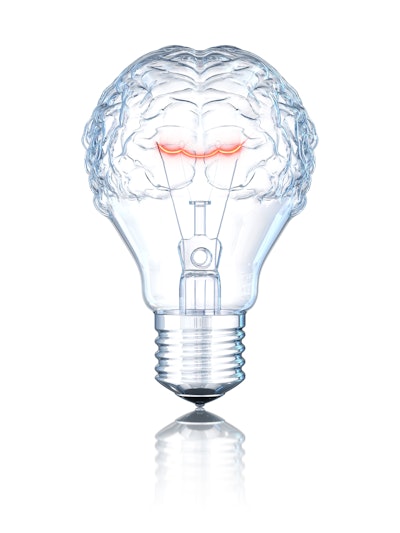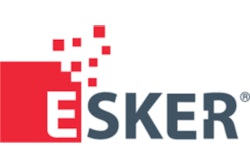
Many manufacturers are turning to predictive analytics to enhance performance inside their factory walls. Uses of advancing analytics include improving production line productivity and quality control, as well as predicting machine failure. Many, however, are not leveraging predictive analytics for what could potentially impact their business on an even larger scale where enacting strategic, data-informed decisions is paramount. Manufacturers are often in the precarious position of investing in capital expenses, such as machinery, technology and facilities.
There is the added pressure of deciding whether to enter or exit new markets, without having direct visibility into all of the external factors outside their proverbial “four walls.” This lack of transparency affects performance. Unknown market performance factors pose a significant planning challenge where last-minute adjustments are extremely costly, if not virtually impossible.
Read Next: Predictive Analytics Becomes Driving Force During Economic Uncertainty
Despite the critical nature of accurate forecasting in manufacturing, the global economy is increasingly volatile with supply chains more technologically driven and complex. Understanding how external factors impact a company’s performance is what offers manufacturers the greatest command on ROI. The ability to accurately predict demand is often more beneficial in the long run than simply analyzing processes inside the factory.
When organizations combine their own internal data with external data it offers a myriad of benefits, including making improved strategic decisions (e.g., knowing where to best invest marketing dollars), planning better for market disruptions, and gaining advantageous visibility into their supply chains.
Accurate Demand Forecasts Equal Better Business Outcomes
Generally speaking, most companies forecast demand by looking at historical data and making assumptions based on past purchasing trends. When relying on trend analysis of historical data, traditional forecasting methods often fall short and don’t provide an accurate picture of future demand. Why? Because they do not consider the external factors—changes in global markets or shifts in consumer behavior or differences in regional economic and demographic trends—all of which can have a profound impact on a company’s future performance.
In short, most companies have a significant blind spot when it comes to predicting future demand. However, this blind spot can be made visible by combining external data from around the world with predictive analytics to gain insights to how these factors will impact a company’s business. Having this insight enables companies to identify upcoming headwinds and tailwinds and gain more accurate visibility to future demand. This insight is what many leading business thinkers are calling Economic Intelligence.
Read Next: Predictive Analytics for Supply Chain Business Users
As just one example, corporate profits and hourly wages impact plastic component manufacturers. An increase in corporate profits for six months, due to favorable exchange rates, leads to an increase of real average hourly income over nine months for top electronics consumer segments. This, in turn, leads to an increase in discretionary spending, which we’ve found to favorably impact demand for TVs and electronics. Insights such as these can help manufacturers predict their products’ demand 18 to 24 months in advance.
In a recent Prevedere survey, over 60 percent of executives feel that incorporating external data into their planning process will result in significant improvement to financial forecasting. In fact, 90 percent of respondents feel that external data will provide at least somewhat improvement to their forecast.
At the end of the day, if demand estimates are inaccurate, leadership doesn’t have the information they need to drive the business forward. Essentially, they are navigating without a map.
Actionable Predictive Analytics Equal Better Business Planning
In any industry, defining outlooks and plans for future business performance can be extremely laborious and time-consuming. The manufacturing industry brings special caveats with different product lines or products that serve multiple, diverse industries. Data teams may take months compiling estimates, only to find that they didn’t account for some factor that had a larger impact than originally thought.
Leveraging massive amounts of data with machine learning drives predictive analytics, which can greatly improve the speed of market analysis and identify leading indicators that were previously unknown to affect demand. The time it would normally take to analyze data can be trimmed from months down to weeks, or even days, by using predictive analytics software. Additionally, the ability to foresee changes in demand is invaluable, allowing manufacturers the opportunity to pivot proactively before the changes impact the business. Whether it is identifying a downturn and pulling back on production, or recognizing an opportunity for growth, predictive analytics fuel data-informed decisions.
Through the use of predictive analytics software, companies can analyze data faster and with more accuracy and gain Economic Intelligence. Machine learning rapidly analyzes millions of global data series and identifies the specific external leading indicators such as crude oil prices, total U.S. employment level, or job openings in manufacturing, that will impact their sales, costs or profitability. Using predictive analytics software, what would take teams months to analyze can often be cut down to weeks or days. Some manufacturers that have adopted predictive analytics into their forecasting processes have reduced their planning times by more than 20 percent.
Read Next: Analytics: Changing the Speed of Supply Chain
Today’s machine learning solutions can support human intelligence by identifying the best external data to use. By reducing the possible choices from millions to a few dozen, data scientists can spend more time leveraging their experience and skills to refine, test and deliver timely insights. This is critical to arming business decision-makers with the information they need to make decisions.
Every industry has its own set of external drivers that drive growth. While the measurable impact of these demand drivers will vary by sector and individual company, determining industry-level drivers is a good start to understanding the health of your industry.
Predictive analytics can also be used to map “what-if” scenarios and identify operational issues. The global economy can throw unexpected curveballs to manufacturers and cause disruptions to the supply chain, and any volatility can throw off estimates.
Third-Party Solutions Equal Unbiased, On-Demand Insights
Change is often the biggest hurdle to companies that want to make use of predictive analytics. To use predictive analytics through all facets of the business, manufacturers need to change their long-held processes. Oftentimes, they think current forecasting methods are “as good as they are going to get.” Implementing predictive analytics into their planning process can be a difficult task requiring resources and manpower.
Third-party predictive analytics solutions are particularly helpful because they can provide a reliable, unbiased baseline that all departments can reference. Now finance, marketing, sales and operations managers can all work for the same numbers and, most importantly, trust their accuracy when making decisions.
Read Next: Visibility in the Demand-Driven Supply Chain
Another finding from Prevedere’s recent survey is that over 40 percent of executives believe having a third-party partner is very/extremely important to their planning needs. Finding trusted and experienced data analytic partners can help implement the latest technologies, augment existing data teams and provide accurate and on-demand insights.
When considering how to use predictive analytics to the fullest potential, business leaders must now look beyond the factory floor. They should identify how to incorporate them into their planning processes, enabling them to reduce costs and streamline operations. When manufacturers think outside their four walls, they will see the true value of predictive analytics.















